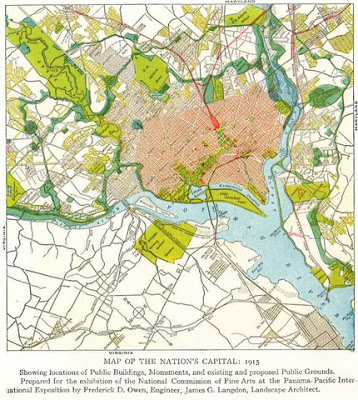Celebrating Artist Betty LaDuke, Multicultural Women’s Art Advocate
In most [of my] paintings, African women are portrayed between myth and reality. They are mothers bringing forth, sustaining, and nurturing all life forms. They are cultural guardians, healers, and mythical goddesses. These strong and resilient role models are my praise songs to Africa.”
-Betty LaDuke, Artist Statement from Celebrating Africa – Celebrating Life Exhibit
There is no better time to share Betty LaDuke’s photographs, artwork and teachings than during Women’s History Month. An artist, photographer, writer, professor and multicultural women’s arts advocate, Betty LaDuke has worked for over thirty years to promote women and international artists.
 |
Kunama Mother Carrying Child on Back,
Barentu Region, Eritrea, circa 1994
EEPA 2007-003-250 |
Born in the Bronx to Russian and Polish immigrants in 1933, LaDuke attended California State University in Los Angeles and the Otis College of Art and Design. After three years of teaching junior high art in East Los Angeles, LaDuke moved to Ashland, Oregon in 1964 to accept a position in the art department at Southern Oregon University, where she taught for over 30 years. The University’s second woman art teacher (and for eighteen years the only woman in the Art Department), she strove to increase awareness of international women artists and humanitarian concerns, teaching courses including “Women and Art” and “Art in the Third World”.
 |
"NAKFA Survivors"
[Taken during the Border War in an Internally Displaced Persons Camp],
Nakfa, Eritrea, 2001
EEPA 2007-003-2508 |
In addition to teaching, LaDuke published numerous books on women’s art, including Compañeros, Women, Art, and
Social Change in Latin America (1985) and Africa:
Women’s Art, Women’s Lives (1991), Africa through the Eyes of Women Artists (1991), and Women Against Hunger: A Sketchbook Journey (1997). LaDuke herself has been the subject of a book by Gloria Feman Orenstein, entitled Multi-Cultural
Celebrations: The Paintings of Betty LaDuke 1972-1992 (1993).
But her stunning artwork, full of uncompromising representations of women's struggles and resilience, is by far the most impactful source of advocacy. Beginning in 1972, she began to undertake annual research journeys to Asia, Latin America, Oceania and Africa, photographing and sketching the women and children in those regions, finding inspiration for the paintings and prints that would make up her circulating exhibits. Engaging with these themes, LaDuke produced traveling exhibits, notably Landscape: A Feminine
Mythical View and Africa Through the Eyes of Women.
 |
"Eritrea-Ethiopia: Where Have all the Father's Gone?" Print by Betty LaDuke
EEPA 2007-003-2649 |
Upon her retirement from teaching in 1996, LaDuke began to travel to project sites of Heifer International, a humanitarian organization concerned with world hunger and environmental sustainability. These experiences inspired a new phase of her work, including a return to mural painting. Today, LaDuke and her husband live in the home they built in Ashland over forty years ago.
 |
Basket Makers, Senafe, Eritrea, 1998
EEPA 2007-003-2493 |
LaDuke’s influence is still certainly seen in her daughter’s renowned activism and political influence: A two-time vice presidential candidate with Ralph Nader for the Green Party (1996 and 2000),
Winona LaDuke is internationally recognized for her work on issues of sustainable development, renewable energy, environmental justice and food systems, particularly for indigenous communities. Founder of the
White Earth Land Recovery Project, one of the largest reservation-based non-profit organizations in the country, Winona, like her mother, has dedicated her life to advocating for human right's issues. Winner of such prestigious honors and awards as the Reebok Human Rights Award (1988), the Thomas Merton Award (1996), Ms. Woman of the Year (with the Indigo Girls) (1997) and named to Time magazines' America's fifty most promising leaders under forty years of age list, Winona continues her incredible record of activism, now working towards a peaceful resolution to the North Dakota pipeline conflict.
 |
Betty LaDuke and Children, Eritrea, circa 1998
EEPA 2007-003-2719 |
For more information about Betty LaDuke, see her
website.
Betty LaDuke Collection
EEPA 2007-003
Consisting of over three thousand color photographs and negatives, 24 art prints, posters, a copy of a sketchbook, biographical materials, exhibition files, publications, and two DVDs, LaDuke's collection provides insight into her travels and work between 1981-2009. Photographing in Ethiopia and Eritrea, particularly in Senafe, Nakfa and Massawa, the images largely depict Kunama and Saho peoples, especially women and children, but also document architecture, agricultural work, beadwork, weaving, village scenes, artists, artists at work, artworks, markets, celebrations, scenic views, animals, churches and mosques. Some of LaDuke's most potent images portray embattled Internally Displaced Persons (IDP) camps during the Border War, especially those in Nakfa and Gelebe (see photo above).
For more information on the Betty LaDuke Collection, please see our
finding aid to learn more about the photographs, art prints, A/V materials, exhibition files, printed material, and biographical records that comprise the collection.
To request an image, please see our website for the
photo request form. To make an appointment at the
Eliot Elisofon Photographic Archives, please email
elisofonarchives@si.edu. Our research hours are Monday through Thursday, 10 AM to 4 PM.
Eden Orelove, Photo Archivist

































